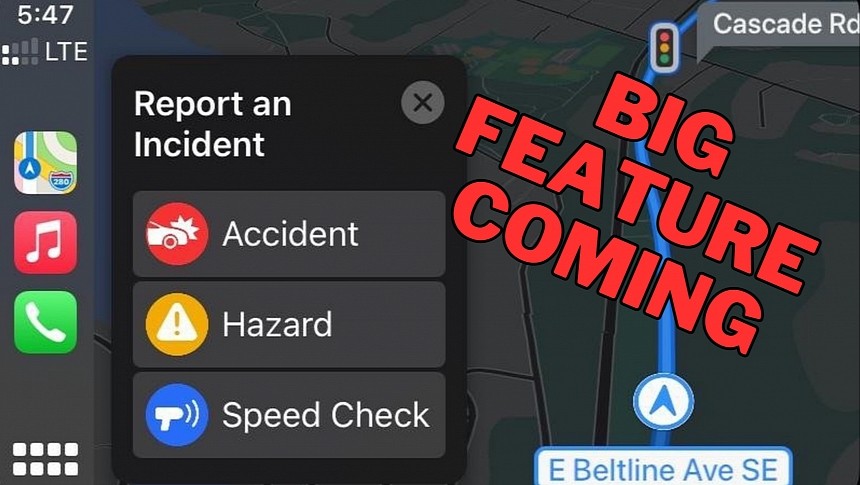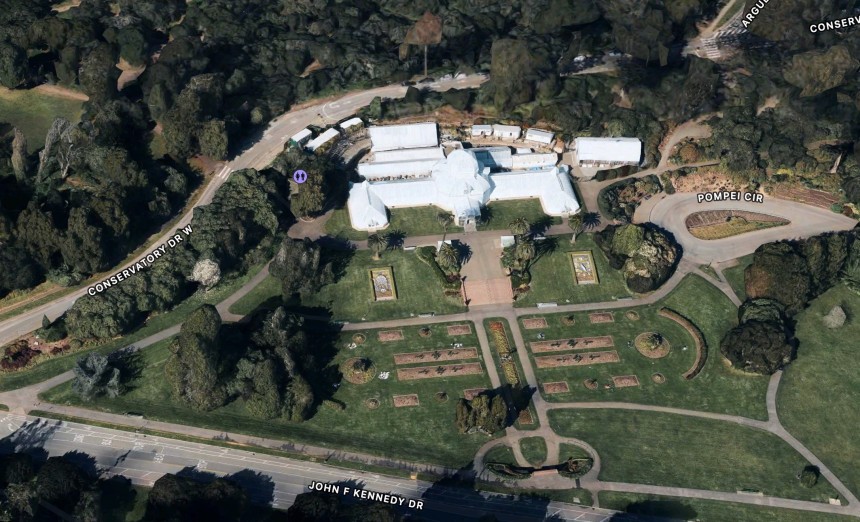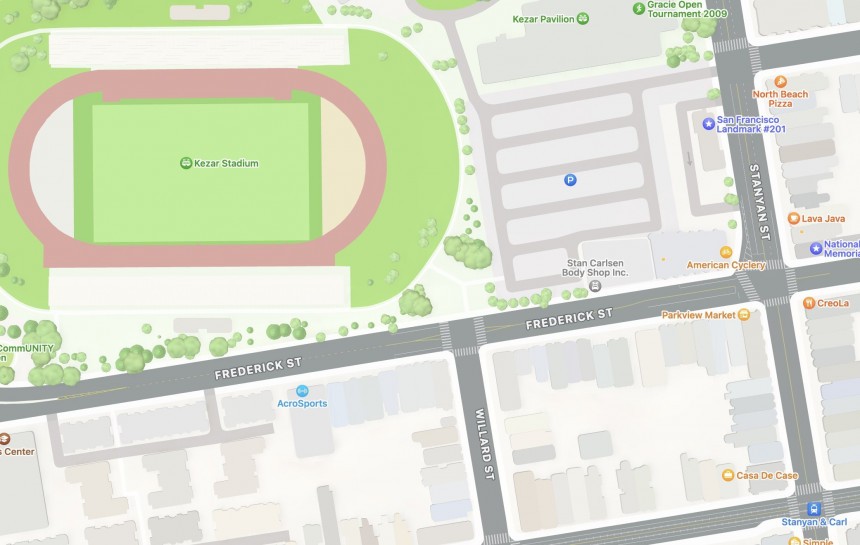The competition in the navigation space is getting fiercer, especially as tech giants Apple and Google are very committed to this software category.
Google Maps is by far the leading name, but Apple is becoming increasingly more interested in building a solid alternative. Apple Maps has made tremendous progress, especially as the company apparently listens to user feedback and improves the mapping platform with the most requested features.
The addition of offline maps, for example, is a confirmation that Apple Maps is slowly but surely becoming an important player in this industry.
But at the same time, Apple is also very committed to improving Apple Maps with innovative features, essentially giving it a lead over its rivals. One of these ideas is called "routing based on detected stops" and has recently been detailed in a patent dated June 27.
By the looks of things, Apple's main purpose is to allow Apple Maps to provide better routes and more accurate ETAs. And to do this, the company wants to generate precise estimates of traffic stops, eventually being able to determine when you're expected to arrive at the destination.
Right now, Apple Maps already takes traffic conditions into account when generating ETAs, but Apple itself acknowledges that bumper-to-bumper traffic and the occasional jams we encounter at complex intersections could cause the estimate to be inaccurate.
This makes perfect sense. Imagine you're driving home on a Friday evening during the rush hour. Apple Maps generates an ETA, indicating that your daily commute could take about 50 minutes. As you drive to the destination, traffic gets worse, so the ETA is no longer accurate. The arrival time is eventually significantly different from the one originally indicated by Apple Maps, making the data rather unreliable.
Apple wants to change the whole thing by taking into account the time you spend in traffic at traffic lights and stop signs. Apple Maps already includes information on the location of traffic lights and stop signs, so the company explains in the patent application that it can analyze additional data to obtain more accurate ETAs.
Apple Maps would collect information from the mobile device but also learn from other sources, such as historic traffic patterns and details obtained from other users. Aggregate data could help Apple Maps estimate how long it'd take to get past slowdowns along the route, eventually allowing the application to calculate the final ETA.
At first glance, Apple wants to turn Apple Maps into a more advanced and more accurate Waze competitor. The Google-owned navigation app uses traffic conditions and user reports to look for faster routes and calculate its ETAs, so Apple Maps is slowly but surely expanding on Waze territory with this potential feature.
At this point, however, Apple's new idea is still in the patent stage, but I have no doubt the company will move forward with this technology, especially as Apple Maps keeps improving in the navigation space.
Furthermore, collecting data from other users on the road makes perfect sense for Apple, especially as the company has recently launched incident reports in Apple Maps.
Similar to Waze, Apple Maps allows users to report incidents on the road. However, Apple has limited the feature to only three types of reports, namely accidents, speed traps, and other hazards. Waze supports many other categories, including roadkill, broken traffic lights, potholes, and vehicles stopped on the road.
Apple's push for incident reporting is still in its early days, and the adoption is lagging behind Waze. In the United States, one of the countries where Apple Maps incident reporting is live, traffic reports are still pretty scarce, whereas Waze continues to be a popular choice for beating heavy traffic, especially in urban regions.
Apple Maps is likely to become a more solid Google Maps alternative in the long term, with more new features already on their way. The iOS 17 launch in the fall will bring offline maps, allowing users to navigate without an Internet connection. Offline maps have long been a top feature request in Apple Maps, especially because such features have been around for quite some time in Google Maps.
The offline maps will require manual downloading, so users will have to define the area they need to navigate without an Internet connection. Apple Maps will also use offline maps for more navigation modes, including public transportation, unlike Google Maps. The feature will become available for everybody with the release of iOS 17 but is already live for testing in the developer builds of the new operating system. The launch will take place in September, with the new update to land on the iPhone XS and newer. The offline maps will also allow navigation without an Internet connection on CarPlay, as long as the necessary data is already saved locally on the mobile device.
The addition of offline maps, for example, is a confirmation that Apple Maps is slowly but surely becoming an important player in this industry.
But at the same time, Apple is also very committed to improving Apple Maps with innovative features, essentially giving it a lead over its rivals. One of these ideas is called "routing based on detected stops" and has recently been detailed in a patent dated June 27.
By the looks of things, Apple's main purpose is to allow Apple Maps to provide better routes and more accurate ETAs. And to do this, the company wants to generate precise estimates of traffic stops, eventually being able to determine when you're expected to arrive at the destination.
Right now, Apple Maps already takes traffic conditions into account when generating ETAs, but Apple itself acknowledges that bumper-to-bumper traffic and the occasional jams we encounter at complex intersections could cause the estimate to be inaccurate.
Apple wants to change the whole thing by taking into account the time you spend in traffic at traffic lights and stop signs. Apple Maps already includes information on the location of traffic lights and stop signs, so the company explains in the patent application that it can analyze additional data to obtain more accurate ETAs.
Apple Maps would collect information from the mobile device but also learn from other sources, such as historic traffic patterns and details obtained from other users. Aggregate data could help Apple Maps estimate how long it'd take to get past slowdowns along the route, eventually allowing the application to calculate the final ETA.
At first glance, Apple wants to turn Apple Maps into a more advanced and more accurate Waze competitor. The Google-owned navigation app uses traffic conditions and user reports to look for faster routes and calculate its ETAs, so Apple Maps is slowly but surely expanding on Waze territory with this potential feature.
At this point, however, Apple's new idea is still in the patent stage, but I have no doubt the company will move forward with this technology, especially as Apple Maps keeps improving in the navigation space.
Similar to Waze, Apple Maps allows users to report incidents on the road. However, Apple has limited the feature to only three types of reports, namely accidents, speed traps, and other hazards. Waze supports many other categories, including roadkill, broken traffic lights, potholes, and vehicles stopped on the road.
Apple's push for incident reporting is still in its early days, and the adoption is lagging behind Waze. In the United States, one of the countries where Apple Maps incident reporting is live, traffic reports are still pretty scarce, whereas Waze continues to be a popular choice for beating heavy traffic, especially in urban regions.
Apple Maps is likely to become a more solid Google Maps alternative in the long term, with more new features already on their way. The iOS 17 launch in the fall will bring offline maps, allowing users to navigate without an Internet connection. Offline maps have long been a top feature request in Apple Maps, especially because such features have been around for quite some time in Google Maps.
The offline maps will require manual downloading, so users will have to define the area they need to navigate without an Internet connection. Apple Maps will also use offline maps for more navigation modes, including public transportation, unlike Google Maps. The feature will become available for everybody with the release of iOS 17 but is already live for testing in the developer builds of the new operating system. The launch will take place in September, with the new update to land on the iPhone XS and newer. The offline maps will also allow navigation without an Internet connection on CarPlay, as long as the necessary data is already saved locally on the mobile device.










